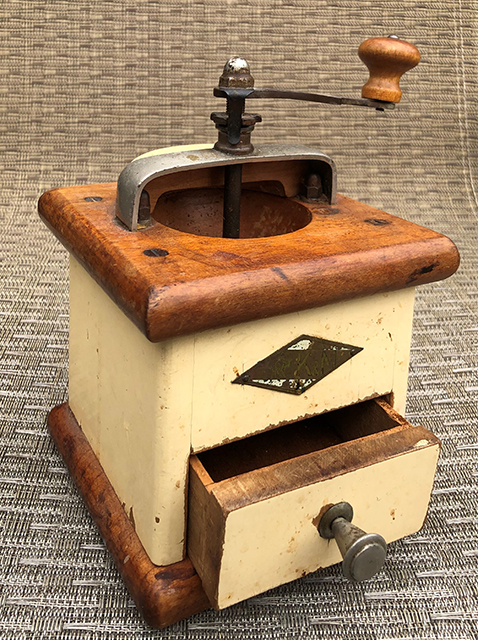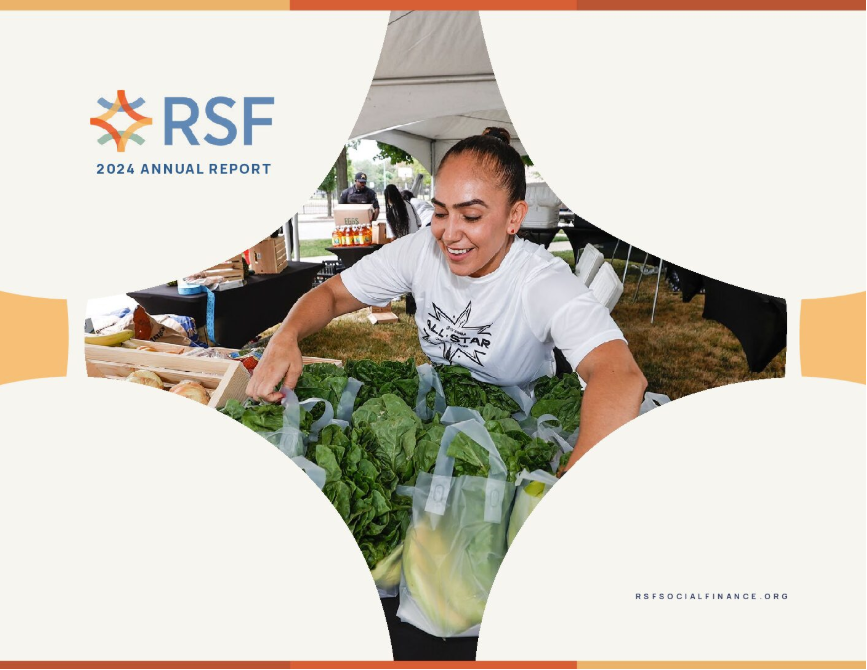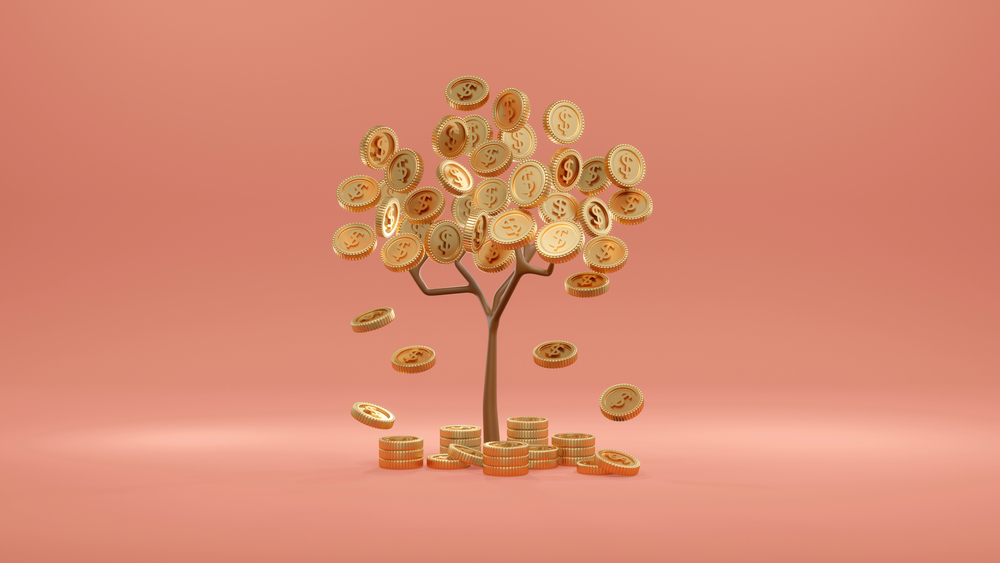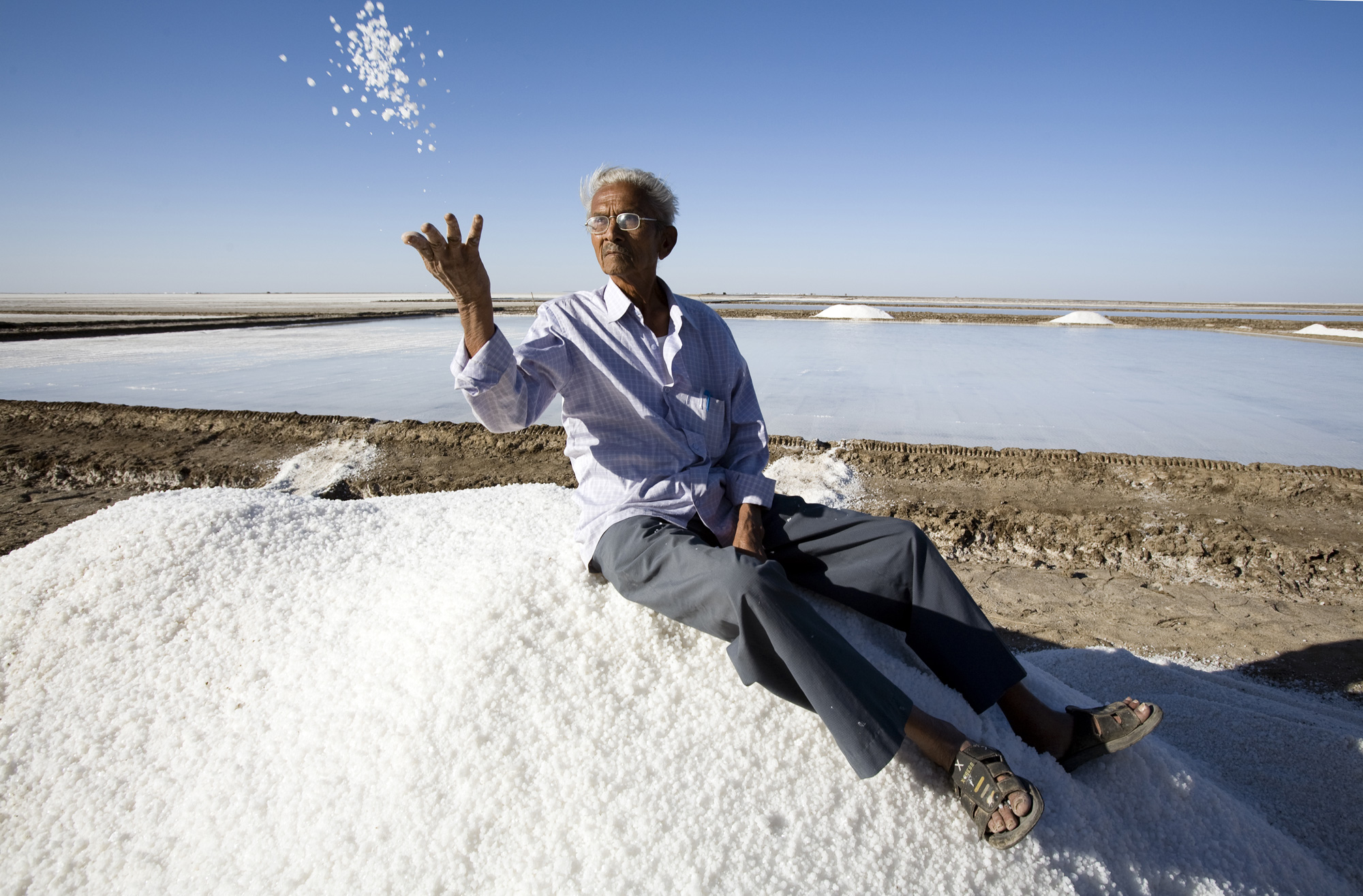A hand-cranked coffee grinder is such a simple, elegant machine. Put the coffee beans in the top, turn the shaft, and ground coffee falls to the bottom, ready to be brewed. Transformation in a gravitational field, to be transformed into liquid in yet a second gravitational flow. But let’s look at the coffee grinder again, in a slow-time inquiry.
Who first discovered that the berries growing on trees could be harvested, dried, roasted and then ground? That is a lot of percolation, and a lot of debt coffee drinkers owe to the discoverers and developers.
Coffee plants themselves originated in the plateaus of Ethiopia. The actual recognition of the coffee fruit’s potency has some mystery around it, but there seems to be some conjectural agreement that a goatherd noticed their goats eating the red berries and the goat’s subsequent frolic. They found the same energetic shift when they took the risk of trying it themselves. This was a kind of turning point. The awareness and desire for coffee went viral in a word of mouth sort of way via the Arabian peninsula, Persia, Turkey, and then Europe.

By the 17th Century, the beginning of the so-called Age of Enlightenment, Europeans had traveled to the Arabian Peninsula and brought back stories of coffee lore, the beneficial effects of its substance, and the beans themselves. One could probably make a case that coffee was the fuel of the Enlightenment—not just the aspect of intellectual stimulant (merci, M. Descartes for mind-body dualism), but also of fostering the enmeshed and materialistic forces of political power and economics. As coffee became a highly desirable commodity, it drove the growth of industry and trade, control of markets, and the militant colonization of the tropical regions where coffee could be cultivated on an industrial scale. There was profit to be made by employing all the commoditizing forces of market economics—including virtually enslaving the farmers. The coffee we drink is an extract at almost every level, though a nod to fair trade in more recent times is in order.
The coffee grinder itself has a history of industrial development that runs parallel to grain mills. The mechanistic impulse for increasing efficiency of processing and scaling of production moved grinding coffee from mortar and pestle to grinding stones to high-speed metal grinders, not unlike the typical one found in grocery stores. There is nothing radical in the slow, steady progress toward efficiency, and in many ways, little has changed. Of course, coffee aficionados now seek out sophisticated burr grinders that come closest to the mortar and pestle with the efficiency of high-speed stone mills. The trusted hand-grinder is really excellent if you don’t mind being a little old-school, patient, and doing a little work.
For many who have the advantage of being able to purchase beans and have or take the time to prepare them each day, grinding takes on a quality of ritual—especially hand-grinding. The grinding arm and handle are attached perpendicular to the central vertical shaft. Turning the crank is a kind of complementary action to the gravitational action of the coffee itself. Gravity is a spatial force. Moving clockwise on a horizontal plane, the person grinding is engaging time forces and, if done consciously, will also cross the sensory-motor midline, a health-giving practice for children and adults. I suspect that one of the reasons such a ritual feels good is that such a process taps into an important aspect of physical labor lost in the digital age.
You might reasonably wonder why I have chosen to write about a coffee grinder. Well, it caught my gaze as I wandered through my house, a kind of COVID preoccupation to tune observation. The old grinder was a gift from a friend and has survived four children playing with it to grind oats, real or pretend. It has brought much joy and so has resided on the corner of our kitchen counter, mostly aesthetic but unused except when the grandchildren visit. And I was charged with finding an object or such that would stand for how I imagine money will play a healing part of new and emergent communities for a gathering called Money & the New Community.
As I spent time observing the coffee grinder, I understood that it was standing in for the whole of economic life. The grinder would be economically meaningless without it intermediating natural resources, labor, and capital.
As I spent time observing the coffee grinder, I understood that it was standing in for the whole of economic life. The grinder would be economically meaningless without it intermediating natural resources, labor, and capital.No matter which aspect of the grinder I thought about or imagined into, I was brought to a place that sits within an uninterrupted flow of nature, human nature, a dynamic link between producer, distributor, and consumer, labor and pleasure, physical and metaphysical assets, and the fluidity of time. There are many transformational moments in these fluid constellations of relationships, such as roasting and packaging, some more conscious than others. To recognize that we are inescapably embedded in an interdependent web of reliance on others and that reciprocally others rely on us, is to see the wholeness, complexity, and I would say the phenomenon of economic consciousness. We are all in it, of it, and charged with finding a comprehensive understanding of it. Without this effort and discipline, we are likely bound to the assumptions of the historical market and profit driven paradigm. It is a paradigm that has celebrated materialism, supported some amazing advances in knowledge, and at the same time continues to dehumanize and commodify people and decimate the environment. In the closed system of our world economy, nothing can be externalized; it can only be ruined or regenerated.
I would encourage each reader to spend some time contemplating one commodity or another. Every object has an origin story. It likely emerged as the convergence of precedent, observation and imagination, a need in the world, and a sense of what the material world could make possible. All of these are human activities, so both the powerfully constructive and destructive aspects of the human spirit, our blind spots and insights, and our assumptions can become visible in such a process. This is all toward becoming aware of our participation in the whole economic system and to reground it in human experience. Without this labor, the new community and a changed economic system are challenged to emerge.


